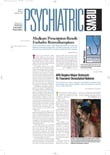A new study offers a glimpse of some of the cerebral “highways” that people with autism may use when trying to remember letters of the alphabet. It has found that when persons with autism try to recall letters they have seen, they may perform as well as individuals without the disorder, but even when their performance is comparable, they may tap brain areas not deployed by the latter.
The investigation is in press with NeuroImage. The chief investigator was Hideya Koshino. Ph.D., an associate professor of psychology at California State University in San Bernardino.
The scientists used functional magnetic resonance imaging to visualize the brain activity of 14 high-functioning autism individuals and 14 control subjects who did not have autism while they tried to remember letters of the alphabet. The control subjects were matched with the autism subjects on I.Q., age, gender, race, and socioeconomic status. The investigators also evaluated the ability of both groups to remember the letters.
Although the autism group remembered as well as the control group, the former used different brain areas to do so.
The autism group showed less activation in the left hemisphere frontal regions than the control group. Verbal working memory is known to be related to the left prefrontal cortex, whereas nonverbal working memory is linked with the right prefrontal cortex. “Therefore, it is possible,” the researchers wrote, “that the autism group processed the letter stimuli of the present study in a nonverbal fashion using visual codes, whereas the control group processed them verbally.”
Or to put it another way, the autism subjects probably saw each letter as an object, not as a letter, Nancy Minshew, M.D., a professor of psychiatry and neurology at the University of Pittsburgh and a co-author of the study, told Psychiatric News. “They were not associating linguistic meaning to it since they were not tapping into language areas.”
The autism group also showed greater activation than the control group in the right hemispheric parietal regions. “Together with the first point that the autism group showed hypo-activation in the left prefrontal cortex,” the researchers wrote, “these results seem to indicate that the autism group processed the letter stimuli as nonverbal, visual-graphical codes.”
Finally, the autism group demonstrated more activation than the control group in the posterior brain, such as the left temporal and right temporal regions. “This pattern might also be related to the information-processing style of the participants with autism,” the investigators speculated, “suggesting that they relied on analysis of lower-level visual features.”
All together, these results add to the growing body of evidence implying that people with autism think differently, Minshew said. The results also insinuate that pictures might be an effective way of teaching the meaning of letters to persons with autism.
The study was funded by the National Institute of Child Health and Human Development.
An abstract of “Functional Connectivity in an fMRI Working Memory Task in High-Functioning Autism” can be accessed at<www.sciencedirect.com> by clicking on “Browse A-Z of Journals,” “N,” and then“ NeuroImage.” ▪
